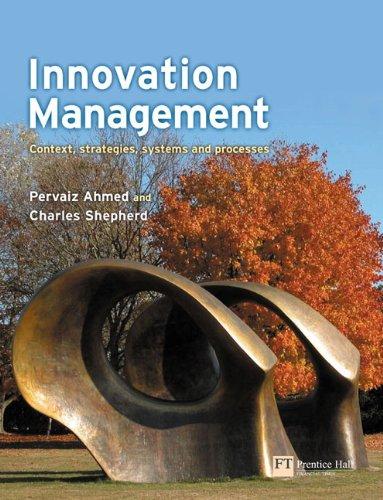An efficient supply chain is a prize worth striving for. According to Accenture, the consultancy firm, supply
Question:
An efficient supply chain is a prize worth striving for. According to Accenture, the consultancy firm, ‘supply chain leadership’ can increase a company’s market capitalisation by between 7 and 26 per cent above the industry average.
But for a business, even competing for that prize demands a significant investment in resources. An efficient supply chain is a must for a widening range of businesses. Fashion, hi-tech and grocery retailers grasped early on the importance of ensuring the right stock reached the right store at the right time. No one wants a warehouse full of summer dresses in October, or indeed shelves of last season’s mobile phones in the run-up to Christmas. But the supply chain is now moving up the agenda in slower-moving sectors such as heavy manufacturing.
Effective supply chain management is the only way to make efficient use of global sourcing strategies and especially, the huge manufacturing capacity of China and the Pacific Rim. ‘Our internal systems handle more than 700 suppliers’, says Christian Verstraete, worldwide supply chain expert at Hewlett-Packard. ‘We have to be able to exchange messages not just with them, but with their suppliers.’
Supply chain managers in many sectors are looking for greater visibility of what is happening in their supply chains and faster access to more accurate data. This means that if there is an unexpected event, be it storms affecting shipping or a production shortfall, companies can divert stocks or bring in alternative suppliers. ‘Companies are not just asking suppliers why there is a problem with an order’, says Sanjiv Sidu, president of supply chain management software vendor i2. ‘They are asking: “When did you first know, and why did you surprise me?”’ In heavy or complex manufacturing, supply chain problems can lead to cancelled orders running into billions of dollars, or severe penalties for late delivery. As manufacturers move away from vertically integrated production, the supply chain suddenly becomes critical.
‘In aerospace and defence, we are 10 years behind the hi-tech or even automotive sectors and how we improve the performance of our supply chain is quite a challenge’, explains Bill Black, chief quality officer at aerospace manufacturer EADS. ‘The cost of running our supply chain logistics is minor, set against the $100m cost of an aircraft. But the cost of failure is enormous. About 80 per cent of the cost of an aircraft is accounted for by suppliers and partners’, says Black, making EADS ‘architects of complex products’. ‘I need to know if an event can affect our master schedule and that means that I need to know what is happening, not just with my tier one, but with tier four, five or six suppliers.’ Visidot is one of a number of new technologies that are helping businesses improve supply chain visibility and the speed at which they collect supply chain data. Others include radio frequency identity (RFID) tags as well as three-dimensional and even colour bar codes. ‘In the past, for manufacturers [supply chain] visibility stopped at the batch or lot level’, says Krish Mantripragada, head of RFID and Auto-ID solutions at enterprise software vendor, SAP. ‘But recalls and quality issues are putting a lot of pressure on companies to make their data more granular, and to be able to track single items.’
QUESTIONS
1. Why is supply chain management important for innovation?
2. Explain in what way the supply chain process is connected to the innovation process.
3. Identify the advantages and disadvantages of an integrated supply chain system?
4. What role does technology play in the supply chain?
Step by Step Answer:

Innovation Management Context Strategies And Processes
ISBN: 9780273683766
1st Edition
Authors: Charlie Shepherd, Pervaiz K. Ahmed





